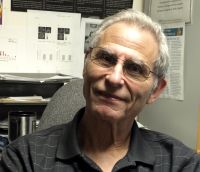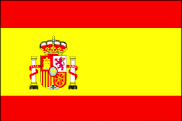
Michael I. Posner Ph.D.
National Medal of Science - Behaviorial and Social Science 2008
Psychologist. Cognitive neuroscience - attention, early brain development, changes in brain systems with learning; developmental disorders; brain injury. Posner cueing task. Founding Director, Sackler Institute for Developmental Psychobiology.
Fifty Years a Duck
13th and Alder
13th and University
Science Complex
To summarize the changes during my 50 years as an Oregon I decided to walk down 13th Avenue through the heart of the University and note my memories and what has seemed to change. It is well documented in the psychological literature that memories can be subject to amendment by subsequent experience, so keep that in mind as you read.
13th and Alder
If you stand on the corner of 13th and Alder and face south you look at Condon Hall. On Sunday April 26th 1970 I was working in my office in the northwest corner of Condon Hall. I looked down from my office to see an unusually large number of students with what appeared to be planters which they were placing on the traffic lanes of 13th avenue. It was the start of a protest of the continued traffic through the heart of the University and of the Vietnam wars continuation. At the time I knew little of the history of efforts to close 13th Ave. and was surprised by the controversy these barricades produced among the Eugene citizenry many of whom regarded them as not only illegal, but evidence of the revolutionary zeal of the Eugene students. Over forty years of closure seems to have ended the controversy, I guess most approve of the relative quiet of the street even if pedestrians still have to dodge bicycles and skateboards.
Condon Hall then contained the departments of psychology, anthropology and geography. Most notable, then and now, was a beautiful three dimensional map of Oregon. I took generations of visitors to see why the Willamette valley contained almost all of the people in the state, given the vast dessert east of the Cascades, the narrow coastal strip and the small valleys of the Umpquah and Rogue rivers to the south. No other experience could give a clearer picture to the visitor of how the University related to the state which it served.
Immediately to the east of Condon was a sort of twin, Chapman Hall, which housed the graduate school, the department of philosophy and later the Clark Honors College. For one year I served then Dean Aaron Novick, as director of Scientific and Scholarly Research. Aaron wanted a social science person to complement his work in the sciences and his other Assoc. Al Kitzhaber (father of the current governor) from English. It was a great pleasure to work for Aaron, he was a brilliant man who had been the founding director of the Institute of Molecular Biology. I was responsible for signing off on ALL of the research grants at the University. It was a half time job and I did have a full time administrative Asst., Fred Wilhelm. Fred and I set up the review process for human subjects when NIH decided that some oversight board needed to examine each grant. This may be amazing to people to think about the large number personnel now involved in approving and monitoring grants and gives an indication of the changes that have occurred over 50 years.
Across the street, North of Condon, one can see the gigantic Lillis Business Complex. Only a small part of it then called Commonwealth Hall was present fifty years ago. From the beautiful Atrium that brings together the separate wings of the building one can see the Knight library, the art museum (now Schnitzer museum of Art and the Prince Lucien Campbell which was built in the early 1960s shortly before I arrived on campus.
Just past the business school is the old Law School Fenton Hall, now mathematics. This was the home of the law school when Wayne Morse served as Dean. Morse led the University in a fight against the legislature's depression era effort to move all science to Corvallis. His fight was not only successful for the University, but Morse was able to parlay it into a run for the senate where he served multiple terms, first as a Republican (imagine that) and later as an Independent and Democrat. Morse was one of only two senators who voted against the Tolkien Gulf resolution that authorized the US to strike Vietnam and led to the extension of the war there. Law is one of the fields that can get large donations, so the school has moved twice since the Fenton Hall days.
Continuing the walk down 13th Avenue we come to Johnson Hall, on the south side of 13th. Johnson housed the UO administration including the University President and Vice Presidents. During my interview I had met briefly, with President Fleming, but a few weeks after I arrived I was to have a much more consequential meeting. During fall term of 1965 I had started teaching a course in the Psychology of Learning to 511 undergraduates. In the middle of the term the state Attorney General decided to enforce a loyalty oath to be required of all employees of the state including faculty. Unlike the loyalty oath I had signed as an army officer, this one "required us to teach by percept an example loyalty to the US." In the middle of the Vietnam war a clearer violation of academic freedom could not have been written. Everyone said the oath was pro forma, but I refused to sign. While many members of the faculty agreed with my stand no one, not the department head, dean or law school dean would agree to do anything to support my stand. Unfortunately, they said I would not be allowed to teach or be paid without signing the oath.
Having just bought a house and the father of two sons, not yet as independent as they were to be later, I felt I could not take the risk of being without pay and decided to return to Wisconsin, who despite my clear demonstration of a lack of loyalty, seemed likely to welcome me back. Fleming was entirely different. He agreed to allow me to teach, despite the fact that it was illegal, and although he could not pay me, because checks came from the Chancellor's office, it seemed to me that he was taking a clear risk for me and it was, we both agreed, likely the oath would be rule unconstitutional as a similar one had been in Washington state. That is what happened and my career at Oregon was set. I also now recognized the difference that a bit of courage could make in an administrator!
I served two terms on the elected faculty advisory board that advised the President of the U of O. . The first was with President William Beatty Boyd. Boyd was the most puzzling of the many Presidents I have met over the years. Boyd was a truly brilliant lecturer. So brilliant that his state of the University talks brought out a huge crown of professors. He was handsome and highly emotional, in fact as far as I could tell all of the women and half of men on the advisory committee, including me were in love with Boyd. However, no more unlikely personality to serve in a public role could be imagined. He loathed football and although he claimed his contract required his attendance at games he never really watched them. He famously thought one was over when half time arrived! Also at meetings with the business community, which I attended, he was off by himself, perhaps a bit too shy to commit to one of the rather dull discussions. Boyd clear needed an effective provost. When the search took place only one candidate, Paul Olum, had any substantial support. I thought for the good of the university it was critical to appoint Olum, but his wife, who wanted an appointment in Psychology. She had a PhD from Cornell, but had published little. I worked hard for her appointment . Olum was an outstanding Provost, but later as President he was more problematic.
When Olum became President I was still on the advisory council. He was the only administrator with whom I felt it necessary to prepare before meeting. He was so incisive and brilliant that you felt a bit like a child with your parent. Olum was a distinguished mathematician who had headed the math department at Cornell and then was attracted to go as Dean of Science to Texas. His belief that Texas was destined to be a leader in American education seemed to me, at the time, very naive. He was only there a short time before politicians fired the President and it was clear that Texas including the University was run mainly by politicians. Later I thought his going to Texas was an indication that, despite he brilliance he could show poor judgment. This became clearer with some mistaken appointments, he judged people by their intelligence, not apparently realizing that other factors were often involved in success. He also decided to allow the campus buildings and grounds to deteriorate, with the idea that the legislature could recognize how under supported we were and increase its budgetary support. That increased support never happened, but a run down campus did take it toll on faculty morale. Despite it all Olum remained the most popular President we had with the faculty.
Walking further east on 13th one comes to a small building called Collier House. Psychology, came to Oregon in 1895 . Oregon was one of the first schools west of the Mississippi to house a modern psychology program (then called mental hygiene) after its creation at Leipzig in the late 1870s. The department head, a former confederate colonel, set up a laboratory on the second floor of Collier house that more recently served as a faculty club and then a University Center. He received a small grant from the legislature to buy equipment. The grant was in the sum of $500, in 1965 when I was invited to Oregon as Assoc. Prof., I was given a sum of $3,500 to set up a "modern laboratory" today the sums often involve hundreds of thousands of dollars in set up funds.
Across 13th avenue from Collier house is Friendly Hall, the home of the College of Arts and Sciences and several modern language departments. Although the office of Dean encompasses 2/3 of the University the College facilities remain quite small.
13th and University
University Avenue ends at 13th just east of this intersection is the Erb Memorial Union. On the north side of the intersection is the first of the Science buildings Columbia Hall which houses a large classroom of 500. During my first quarter at the University I taught a class in Learning and Memory which filled Columbia (511) and formed a part of the introduction to psychology.
Just behind the student union is Straub Hall which is at the end of Onyx St.. It was built in 1929 as the first men's dormitory on the U of O campus. By 1975 it was no longer very popular as a dormitory and was remodeled to serve as the home of Psychology and Linguistics. In 2014 it is undergoing yet another renovation and should be ready to house some of psychology and linguistics again in 2015.
The basement housed the Cognitive Laboratory, which I had helped build up when I came to Oregon. During the subsequent years under the leadership of Ray Hyman, we added hundreds of thousands of dollars of equipment including perhaps the first computer in the US which was set of to time share psychological experiments on a PDP9 computer. During the Vietnam war we were very worried that this equipment much of which had been purchased by the US Defense Dept. was at real risk. Fortunately, many of the Vietnam radicals were also on our pay rolls at participants in psychological experiments!! This facility moved to the basement of Straub Hall which had previously served as cold storage locker and washing machine room for the dormitory. Our electrical recording equipment moved into several of the former cold storage rooms while our computer occupied the old laundry room. The basement of Straub housed the old PDP9 as well as a new PDP15 that time shared many experiments. Several generations of graduate students and postdocs shared this facility as well as meetings that were held every Tuesday night at my home only a mile south of Straub. We ran so many people in this laboratory that one underground newspaper ran the following notice aimed at those hippies headed to Eugene :
"when in Eugene if you needed bread call the Cognitive Lab, it pays to look deranged."
The shared facilities provided a great training environment for students because it brought them in close contact with each other and all of the cognitive faculty. This environment has not been maintained in an era when every person has access to more than all of the computing power of our shared facility.
Science Complex
Willamette hall, the home of the Physics department brings together many of the physical sciences including Chemistry, and Biotechnology. Before the four story Olum atrium at Willamette was built the Science complex was mostly a jumble. The atrium provided a new focal point crowned by a beautiful sculpture of DNA. This was very appropriate to my way of thinking, because the Institute of Molecular Biology, one of the oldest such programs in the US, has always been a model and inspiration of science research and teaching at its best. In fact Streisinger hall which is integrated into the Atrium is one of the few named after a faculty member. I knew and greatly admired George Streisinger as a model professor, passionate about the role that a state University could play in the life of all citizens. When Willamette hall was dedicated by then senator Mark Hatfield there was four separate protests involving both national environmental policy and local treatment of students. The administration was appalled, but to me it seemed the University at its best.
Just beyond Willamette is Heustis Hall which serves as a center for the Institute of Neuroscience. I have been more or less involved with the Institute since its inception, but it was not until recent years that psychologists working with humans were really integrated into its program. In the early years I served mostly as an outside member on thesis committees and was friendly with many members of the Institute that included several in the psychology who worked primarily with non-human animals. With the advent of imaging of the human brain the separation between human and other animals in neuroscience has lessened and a subfield called cognitive neuroscience developed. During the 1990s under the leadership of David Frohnmayer, then President of the University, funds were allocated to support an imaging facility within Straub Hall. The generous endowment of Robert and Beverly Lewis made this possible. It was amazing how a modern facility housing a head only scanner was tucked into Straub Hall. Although the noise and disruption during construction was horrendous, the scanner brought a great advancement to work in cognitive and later affective and social neuroscience.
The integration of the Neuroscience institute is enshrined in the Lewis Integrated Science Building and is now home to almost half of the faculty of psychology, those who use the magnetic resonance imager housed in the building, The new building was designed to foster combined human, animal and computational work to increase understanding of brain mechanisms and their application to the human condition. This building and the goal the University has for it demonstrates a broad vision for research related to brain science. Whether it will reach that vision depends on giving the faculty involved sufficient leeway to construct the program that best fits its conception of the science. It remains to be seen if that vision will be realized.
It is not a long walk down 13th avenue, but there are a lot of memories along the way and hopes for the future.
Discover Your Abilities and Aspirations!
 $10 $25 $50 $100 Other
$10 $25 $50 $100 Other
Tax Exempt 501(c)3 Non-Profit Organization
Any Currency
“…the peace that is found in libraries and laboratories…” - Louis Pasteur
Copyright © 2023 Ganga Library Inc. All Rights reserved.;

Photo: Courtesy Dr. Michael I. Posner. Upon receiving Carty award 2012.
Name: Michael I. Posner
Birth: 12 September, 1936, Cincinnati, OH
Title: Professor Emeritus Dept. of Psychology
Affiliation: Institute of Neuroscience, University of Oregon, USA
Citation: "For his innovative application of technology to the understanding of brain function, his incisive and accurate modeling of functional tasks, and his development of methodological and conceptual tools to help understand the mind and the development of brain networks of attention." Presented by President Barack H. Obama in the East Room of the White House on October 7, 2009.
Biography
Vita
Publications
Books
Photos
'Fifty Years a Duck'
Copyrights: Dr Posner has not registered his work.
Thesis advisor:Paul M. Fitts
History of 'Neuroscience'
Educational: Neuroscience of Attention. GoCognitive
Bearing Laureate's Name: Posner Cueing Task













